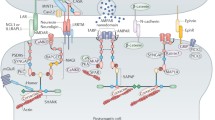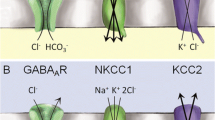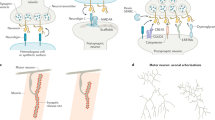Abstract
Neuronal morphogenesis, synaptogenesis and synaptic plasticity are fundamental aspects of nervous system development. Much of our current understanding of how each of these processes contributes to the establishment and maintenance of neural circuitry has come from a molecular description of specific classes of key molecules. With regard to synapse assembly and function, a family of membrane-associated guanylate kinase homologs (MAGUKs) have emerged as central organizers of multicomponent protein signaling complexes. In particular MAGUKs appear to play fundamental roles in the transport, anchoring and signaling of specific subclasses of synaptic receptors and ion channels. In this review, we will focus on the role that subfamilies of MAGUKs play during the formation, maintenance and plasticity of the vertebrate central nervous system glutamatergic synapse.
Similar content being viewed by others
Author information
Authors and Affiliations
Corresponding author
Additional information
Received 22 September 2003; received after revision 14 November 2003; accepted 24 November 2003
Rights and permissions
About this article
Cite this article
Montgomery, J.M., Zamorano, P.L. & Garner, C.C. MAGUKs in synapse assembly and function: an emerging view. CMLS, Cell. Mol. Life Sci. 61, 911–929 (2004). https://doi.org/10.1007/s00018-003-3364-5
Issue Date:
DOI: https://doi.org/10.1007/s00018-003-3364-5




